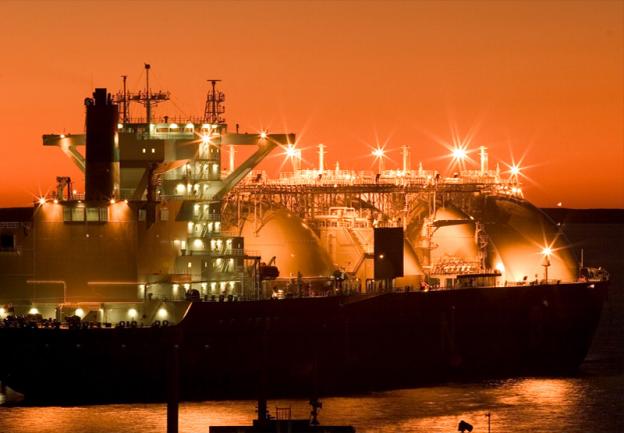The technology created for diving underwater has undergone a significant transformation since the initial apparatus introduced in 1535 - a large wooden bell that rested on the diver's shoulder with a tube running from the surface that piped fresh air. The advancements in this technology, as well as the depth of understanding of the principles of deep sea diving and its effects on the human body, have allowed us to expand our ability to explore the underwater world. These pioneering ways have allowed us to further understand, explore and ultimately utilise the resources found on and below the sea-bed.

- LNG Ship at night
- Image copyright of Woodside
Further subsea exploration has resulted in the discovery and subsequent extraction of oil and gas resources below the sea-bed. This has led to the growth of the Western Australian petroleum industry, currently the largest contributor to Australia's production of petroleum products with a value of $21.3 billion for the nation's economy. Thanks to the advancements in diving technology, maintenance and exploration are no longer just carried out by divers. Now they are also carried out by Remotely Operated Vehicles, or ROVs, in order to maintain and inspect subsea sites. In deep water, ROVs have become the only method of installing new hardware, performing maintenance checks and rectifying problems. A recent example of this was following the failure of the drilling operations on the Deepwater Horizon drill rig in the Gulf of Mexico, where in the immediate aftermath of the event, ROVs were used first to examine and try to fix the malfunctioning ‘Blow out Preventer’ (BOP) and then to manoeuvre and install a range of devices designed to stop the flow of oil.
The era of modern economic growth has been intimately linked to rapid expansion in the use of fossil fuels. Concentrations of greenhouse gases like carbon dioxide which now exceeds the natural range of the last two million years by 25%, hence the net effect of human activities since 1750 has been one of warming. Due to the growth of the industry as well as the depletion of resources, there is now a shift towards seeking out sustainable means of utilising subsea resources. The immediate challenge for humankind is to provide capacity solutions to safely absorb additional greenhouse gases, mitigate against dangerous climate change and to develop alternative energy options. Natural gas offers an opportunity for the transition to a lower emission global economy. In time, this will be complemented by gains made in renewable technologies. One method by which we can reduce our reliance on oil-based fuels is by substituting it with gas, such as in the ‘gas buses’ operated by Transperth, which use liquefied petroleum gas (LPG), a by-product of LNG processing.